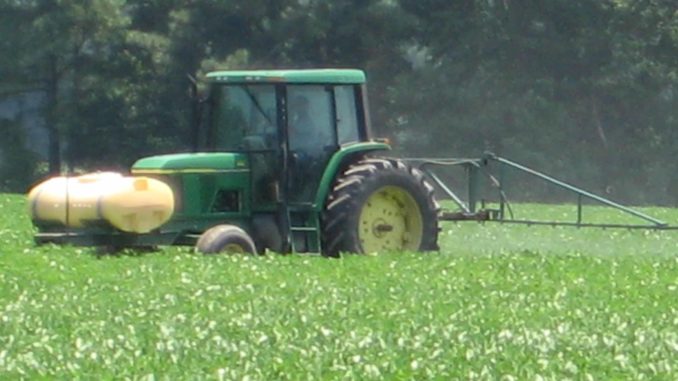
Second spraying will guarantee great doves
The 95-degree days of June can easily pull dove fanatics off course, but Labor Day is less than 100 days away. There is no time to slack off now. Dove fields should be kept clean to ensure vigorous growth, with little to no competition from weedy invaders.
Mourning doves will hone in on crop fields with almost any type of grain, including: millets, corn, sorghums, and wheat. But a dense field of sunflower seeds will almost guarantee quick action from feathered flocks on Opening Day. Doves will pack their craws full with these small, tasty morsels at first opportunity.
So, what exactly makes sunflower fields so appealing? Could it be the vast quantities of fat, protein, vitamins and minerals packed into a small package — or do they just taste good? The answer is probably all of the above, as well as several others. As a migratory species, the mourning dove leaves its northern brooding grounds and heads south for the winter, stopping along their traditional flyways for refueling. They require foods rich in energy to replace their depleted reserves and to fuel their remaining migration and the winter.
No doubt, sunflowers offer doves many advantages and benefits, but premier sunflower fields have a clean soil surface, something that millet, sorghum, and corn fields lack on a large scale. If maintained effectively, pure fields of sunflower should lack competition from weeds and grasses.
Problematic vegetation should be killed and plowed under before planting with an application of a pre-emergent herbicide (i.e. BASF’s Prowl or DOW’s Treflan). These herbicides allow sunflower seedlings to germinate and grow without pesky grasses and weeds sucking up sunlight and soil nutrients. But these pre-emergent herbicides eventually lose their punch. An aerial application of post-emergent herbicide must be used.
Peredovic, Argentine and most other sunflower varieties can be sprayed to control post-emergent grasses using herbicides such as Poast Plus or Select. These should be mixed with its associative crop oil or other type of surfactant recommended on the label. Grasses should be sprayed when six inches tall. These herbicides must pass through the grass foliage in order to carry to the root system for effective control.
While grasses can be a major issue in sunflower fields, broadleaf weeds can be problematic in some areas, even when pre-emergent herbicides and eradication attempts are made before planting. In the past, farmers just had to live with a few broadleaf invaders. However, BASF developed the Clearfield Sunflower variety that is resistant to its Beyond herbicide and will control broadleaf and grassy invaders in sunflower patches. It is the only post-emergence herbicide that will control broadleaf weeds. But Beyond can only be used on the Clearfield Sunflower variety. If used on Argentine or Peredovic varieties, dove hunters will surely be disappointed.
Since most sunflowers were planted in late April or May, the pre-emergent herbicides should be on their way out, with weedy invaders showing their nasty faces in a perfectly good sunflower patch. Follow the label on these post-emergence herbicides, use recommended surfactants, and apply at the recommended rates before they get out of control. Also, avoid applying these herbicides during periods of extreme drought, or the sunflower plots may respond in a negative manner.




Be the first to comment